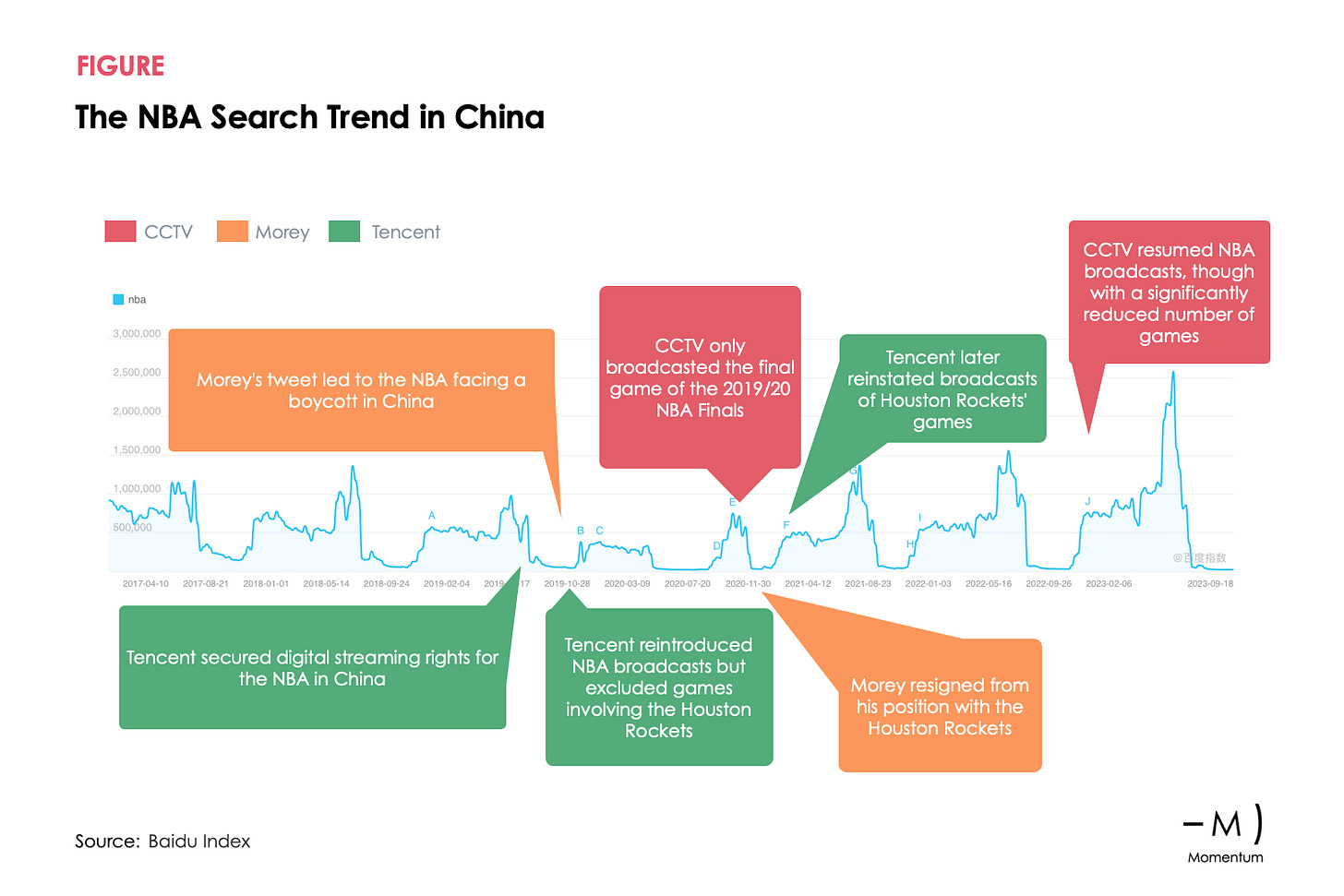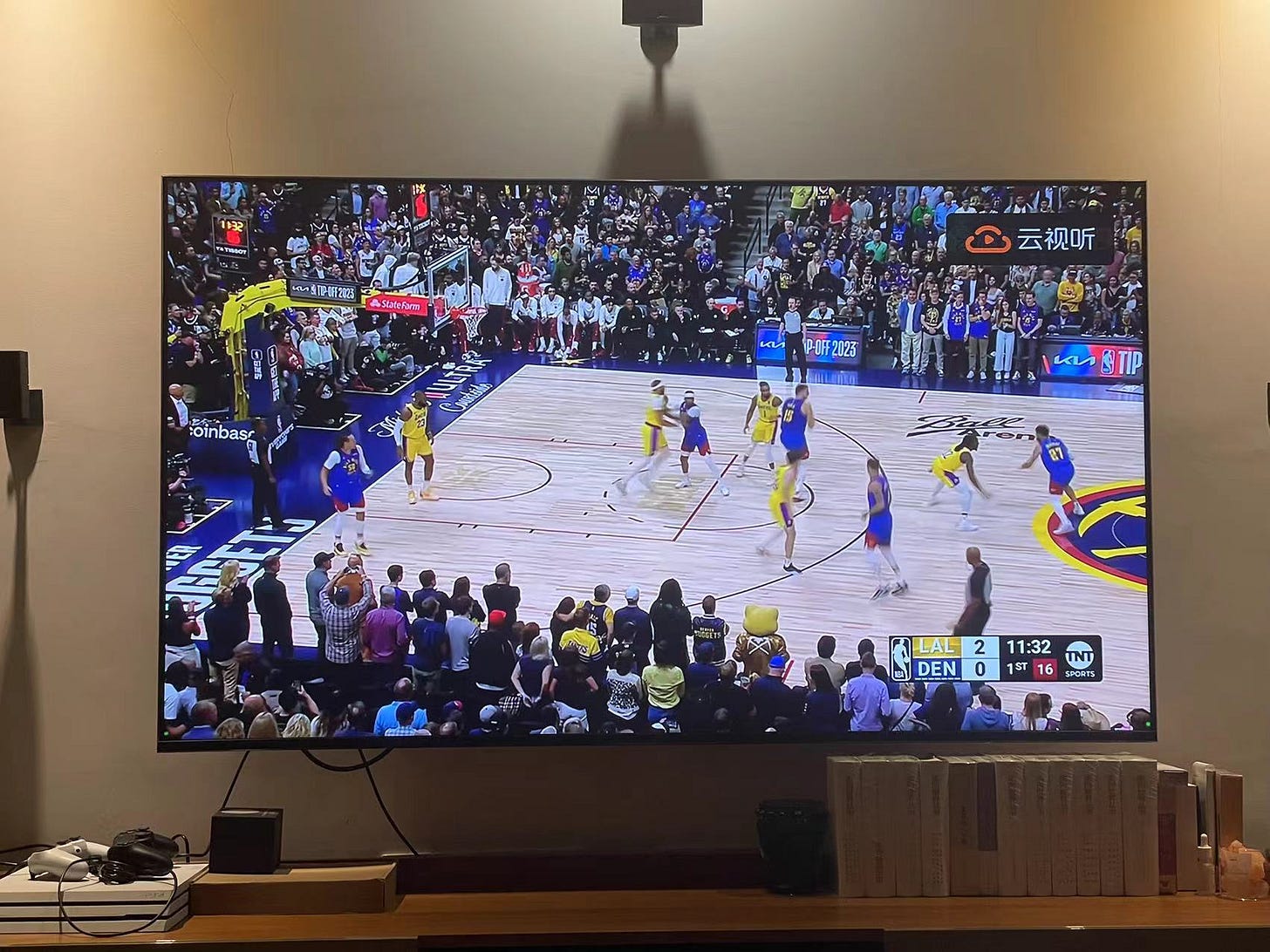The NBA and China: Can the bond with fans be repaired? ( Part 1 )
The Morey incident severely disrupted the image of the NBA in China, and as it attempts to repair the relationship, high price points to access content is hampering efforts.
Article Highlights
Following the Morey Incident, the NBA has made a number of moves to try to win back the hearts of Chinese fans, but they encounter a number of hurdles along the way.
Partnering with Tencent, the NBA looks to be in a great position from the outside, but on the inside, discontent is growing among fans regarding its high price point.
Will fans be willing to shell out nearly double the average as the NBA attempts to regain fans’ trust?
NBA fans are no longer focused on the Morey incident, but rebuilding this relationship is not going to be easy.
For those of you who don’t know, the Morey Incident centered around comments made by the former GM of the Houston Rockets, regarding his speaking out in support of protests in Hong Kong against the Chinese central government.
After a long wait following the incident, China Central Television ( CCTV ) has resumed broadcasting some NBA games. Online payment channels have also returned to normal operation. I have even observed the recent Baidu search data, and the internet attention received by the NBA for the 2022-23 season, especially the attention for the NBA Finals appears to have reached a new high.
All of this information indicates that China and the NBA have reached a positive consensus, and the NBA in China has gradually returned to the right track. Now, the doubts and discussions regarding whether the NBA has decoupled from China can be put to rest.
The question we need to ask now is, do these positive signals mean that the return of the NBA will be a home run?
As you can see from the figure below, my friends, who have been NBA fans for years, have shown a complex attitude in their WeChat conversation towards the NBA since the Morey incident (I was not involved in this discussion). These friends participating in the conversation mainly belong to the middle class, working as designers, university professors, technical researchers, or urban planning experts. These people represent the primary target audience of the NBA but none are willing to pay. The NBA must get to the bottom of how they can match its value proposition with the expectations of the core audience.
At first, most of my friends stopped watching the NBA because of national sentiment issues. As the situation calmed down, in 2022, they began watching again, but still found it difficult to find free viewing channels. In the end, some gave up engaging with the NBA, while others continued to pay attention but couldn't stop complaining about the quality of the games.
The following interviews of fans regarding the NBA, conducted by “In You Media” (a Chinese domestic media), will provide us with a better insight.
”I became a Rockets fan in the year Yao Ming retired (2011). Since then, I have also been a fan of Kobe and LeBron. I have been watching basketball for 8 or 9 years, and it has been the most important youth memory for me. However, after the incident with Morey, I gradually lost interest in NBA games. Now, besides watching LeBron struggle and strive, other games have no appeal to me."
"Although my friends and I are still watching the games, I also realize that the popularity of the NBA is rapidly dissipating. The 'internal injuries' of the past two years cannot be resolved simply by CCTV replays. Besides damaging its own brand image, NBA's actions have prevented the acquisition of new young users. On the other hand, NBA's handling of copyright issues in China is also discouraging us, the old users.”
“I remember very clearly that after Tencent had exclusive broadcasting rights, it was a turning point for the overall NBA viewing experience for fans. Before the exclusive broadcasting, most of the free games provided by platforms were focused on high-profile matches, star players, and popular teams, indicating that the platforms had a certain sentiment and aimed to attract new users. However, when Tencent Sports entered the scene with high membership fees, it scared away many people, and the free games offered to ordinary viewers were often lackluster matches. Fans had to seek other resources. This 'forced' approach to make you recharge for membership at the time discouraged a group of people."
In short, although the government's boycott has ended, the repercussions of the Morey incident have not disappeared. While people are no longer engaging in heated discussions about ideological conflicts, they have now shifted their complaints towards the high barriers to watching games and the lack of game appeal.
In China, CCTV provides some free NBA sessions on traditional television channels, while Tencent offers fans exclusive digital paid content, which seems like a perfect solution for the NBA to simultaneously cover a wide casual audience and monetize specific fans.
Tencent now charges a monthly subscription fee of $9 for watching the NBA, which is significantly more expensive than the initial monthly fee of $4. This is due to the fact that the current copyright deal costs the NBA $300 million per year starting in 2020.
$9 may be a common content subscription price for European and American audiences, but in China, it is already the highest subscription fee in Chinese history, as it took approximately ten years for Chinese audiences to shift from consuming free content to being comfortable with paying monthly subscription fees ranging from $3-$5 for valuable content.
Although CCTV has claimed to have resumed broadcasting NBA games, the number of games is limited, and they are only aired on weekends. I am unsure if this is to cooperate with Tencent's paid services or if CCTV is secretly making it difficult for the NBA. However, one thing is clear now: the growth of genuine users is threatened by the increasing price point.
An NBA industry expert told me:
Tencent's current copyright cooperation with the NBA presents a dilemma. It is unlikely for Tencent to recoup the copyright fees and operating costs, even though they distribute content to BesTV and MiGu in addition to selling it themselves. In the previous copyright cycle, they were barely able to break even. Now that the copyright fees have significantly increased, however, the audience has not increased that much, but may have even decreased. I dare to guess that Tencent may not even consider renewing the contract or greatly reducing the price in the next cycle.
Apart from the price concern, fans are also questioning the attractiveness of the current league games. Compared to the intense and competitive games during the David Stern era, the current league style has become much softer and predictable.
The fundamental reason for all of this is that the league has tried to encourage offense by abolishing too many rules that used to emphasize the art of defense. Therefore, the current games have high scores but are much less intense than before.
Even Jerry West, the legendary player depicted in the NBA logo, has expressed concerns about the current quality of NBA games:
“Um, [the three point line] makes [the game], I think a more difficult game to coach. It emphasizes a different kind of player. I think crowds have to get used to it. There's some nights I go and it's hard for me to watch. In this sense, I'd rather see somebody make a beautiful pass, go in and lay it up instead of four on one, some guy runs behind the three point line and shoots a three. The game is soft that way today. I don't like it. I don't think it makes for pretty basketball. And I think, unless you have a great, great team late in the game, you're gonna lose games, you're taking points off the board.
Taking everything into account, it's pretty clear why a lot of Chinese fans think that shelling out double the regular market price to catch NBA games isn't really worth it. Especially when the bond between the fans and the NBA hasn't been completely patched up, the steep price to watch surely puts off many fans from keeping up with the NBA, only adding tension to the relationship between the NBA and Chinese fans.
Back to the initial question, how much can the influence of the NBA be restored after its return? The answer is already clear, there are still many issues to be resolved in the short term, and it is unrealistic that the company will be able to quickly restore its influence to what it was three or four years ago. Currently, they are facing a new and challenging situation - a weakening relationship with fans, increased barriers to watching games, and a decline in the appeal of the matches.
How has the NBA responded?
In the next section, we will delve into what actions they are taking in order to overcome these challenges. Stay tuned!





